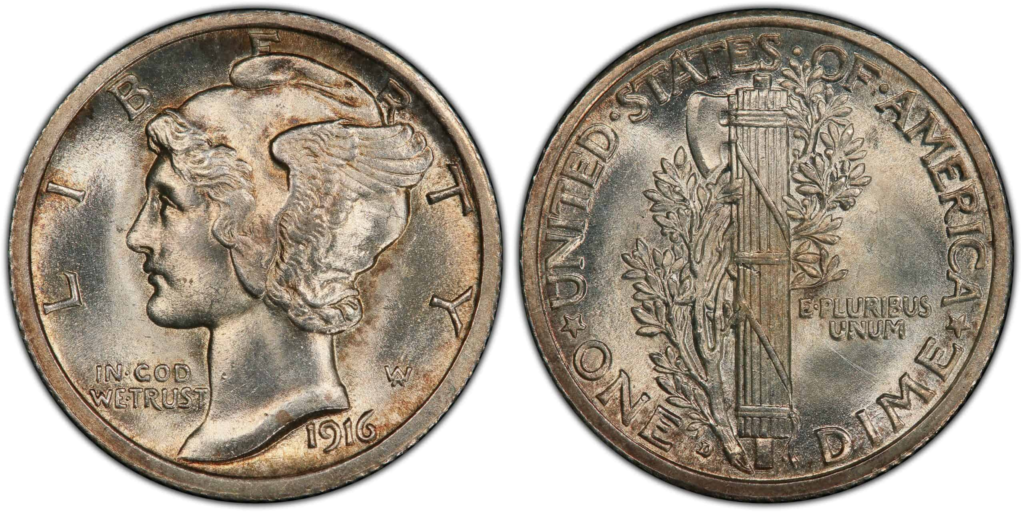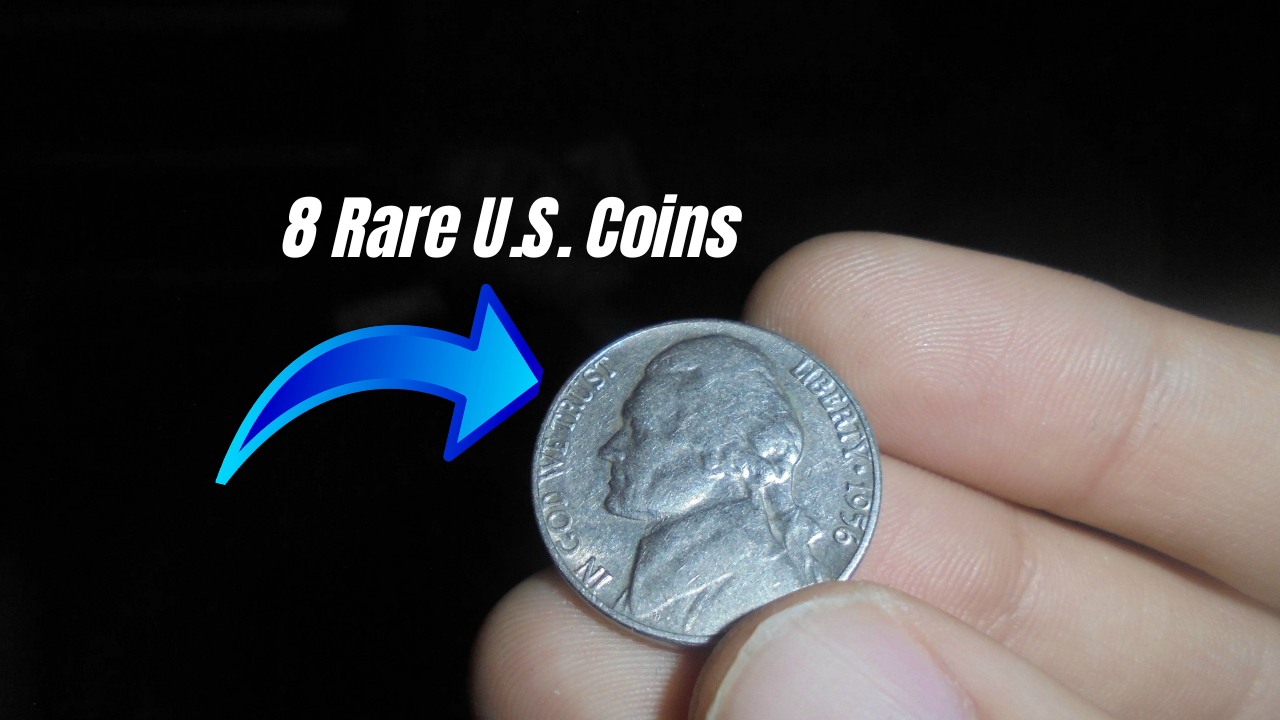8 Everyday U.S. Coins That Are Worth a Fortune: You might not know that a coin in your pocket could be worth thousands of dollars. Some ordinary U.S. coins have sold for millions because they are rare, historical, or possess unique errors. These valuable coins receive a lot of attention from collectors and those who want to invest.
Here are eight tales of common coins that turned extremely valuable. We will show you how you can spot these special coins and give tips on how to find them. Whether you’re a novice coin collector or a veteran of decades of collecting, you could be in for a shock finding something of value in your pocket change.
The tales of these eight scarce U.S. coins demonstrate the potential that lies hidden in pocket change. With a keen eye and some research, you too can discover a treasure right before your eyes. Whether a seasoned numismatist or a curious new entrant, the world of rare coins holds much promise and reward. Coins are not mere pieces of metal; they are portals to history, culture, and, occasionally, great fortune.
8 Rare U.S. Coins Turned Ordinary Pocket Change
| Fact | Details |
|---|---|
| Most Expensive Coin | The 1933 Double Eagle sold for $18.9 million in 2021. Learn More |
| Rarest Coin | The 1894-S Barber Dime, with only 24 ever minted, is one of the scarcest coins. |
| Unexpected Wealth | A 1975 No-S Roosevelt Dime without a mint mark sold for $500,000. |
| Key Resource | Visit PCGS for grading and authentication of rare coins. |
| Expert Advice | Check inherited coin collections or old piggy banks for hidden treasures. |
What Makes a Coin Worth Something?
The question of why certain coins are worth so much money is the answer to finding treasure. There are three main factors:
1. Rarity
The smaller the supply, the greater their value. Coins such as the 1913 Liberty Head Nickel are valuable since only five have survived to this day. Rarity can result from low mint issues, deterioration over time, or special production conditions.
2. Historical Significance
Coins connected to significant events or unique periods in history, such as the 1933 Double Eagle, are highly desirable. These coins, to collectors, are artifacts of history that they can hold in their hands, representing significant periods in economics, politics, or culture.
3. Condition and Grade
The physical condition of a coin is graded from 1 to 70. A higher grade, e.g., “Mint State,” sells for more money. Minor wear or scratches alone will have quite an impact on price, so keeping them in good condition is important.
8 Historic U.S. Coins
1. 1913 Liberty Head Nickel

- Price: $4.56 million (sold in 2018)
- History: Fewer than five were ever made, and their existence is still a secret. These coins have passed from private collections to auctions over the years, with each sale making headlines.
- Tip: Search for 1913 Liberty Head Nickels, but they must be certified by reputable grading companies such as NGC.
2. 1894-S Barber Dime
- Price: More than $1 million
- Rarity: Only 24 were made, and less than 10 still exist. They are believed to have been minted as one-of-a-kind presentation items.
- Fun Fact: A few of them, so it goes, were gifts presented by the superintendent of the mint to family members and close friends. No one seems entirely certain exactly why there are only 24 to exist, which numismatists still dispute to this day.
3. 1933 Double Eagle
- Value: $18.9 million (in 2021 sale)
- Background: First struck in the Great Depression but never put into circulation because of the Gold Recall Act. The coins that have survived are illegal to possess, except in a few cases.
- Pro Tip: If you find any pre-1933 gold coins, they may be worth looking into. Their rarity and legal past make them especially interesting.
4. 1975 No-S Roosevelt Dime
- Value: $500,000
- Why Rare?: It’s a mint error with no “S” mint mark from the San Francisco mint. Error coins such as this are extremely valuable since they occur due to errors in manufacturing, thus being unintentional rarities.
- Tip: Check dimes for missing mint marks; errors can be extremely valuable. Even newer coins with unusual errors can command surprising prices.
5. 1916-D Mercury Dime

- Value: $200,000+ for high-grade specimens
- Distinctive Feature: “D” mint mark for Denver on the back. This was the first coin in the Mercury Dime series, so it serves as a foundation for collectors.
- Tip: Mercury Dimes are extremely popular, particularly those with “full bands” on the back torch. Those bands represent a well-struck coin, which contributes to its desirability.
6. 1873-CC No Arrows Seated Liberty Dime
- Value: Hundreds of thousands of dollars
- Significance: Struck in Carson City, Nevada, during the Wild West. The “No Arrows” term refers to a design element that sets this dime apart from others made that year.
- Collector Insight: Carson City coins tend to command a premium because of their link to frontier history and their limited production runs.
7. 1796 Draped Bust Dime
- Value: As much as $1 million
- Significance: Being one of the earliest dimes to be minted, it holds historical and numismatic value. The coins show the artistry and difficulties of early U.S. minting.
- Tip: Early U.S. coins of the 18th century are always worth a close look. They tend to sell for high premiums because of their age and rarity.
8. 1919-D Mercury Dime with Full Bands
- Value: $218,500 (graded MS 66)
- Feature: “Full bands” describe the well-defined horizontal bands on the reverse torch. This is a sign of a well-struck coin and adds to its attractiveness.
- Tip: Condition is everything; excellent-condition examples sell at premium prices. Even small faults can dramatically decrease a coin’s value.
8 Unusual U.S. Coins Become Everyday Pocket Change Identify Rare Coins in Your Collection
Step 1: Look at Mint Marks
Mint marks show where a coin was made. They are typically on the obverse or reverse. Unusual mint marks such as “CC” (Carson City) or omitted marks (such as the 1975 No-S Dime) are worth looking into.

Step 2: Check for Errors
Mint flaws, like doubled strikes, deleted letters, or off-centering designs, really boost a coin’s value. Examine coins closely under a magnifying glass to find quirky details.
Step 3: Check the Date
Some dates are most prized by collectors. For instance, 1916 Mercury Dimes or 1933 Double Eagles are especially elusive. A brief internet search may uncover if an individual year has special meaning.
Step 4: Rate Condition
Coins with little wear and distinct details tend to get higher grades and sell for more money. Storage in protective cases can help maintain condition and value over the long term.
FAQs:
Use Professional Grading Services
Organizations like PCGS and NGC can authenticate and grade your coins. Certification ensures buyers trust the coin’s authenticity and condition.
Consult Local Coin Dealers
Visit reputable coin shops to get a preliminary evaluation. Ensure the dealer is a member of a recognized association, such as the American Numismatic Association (ANA).
Research Online
Use databases like Coin Values to estimate a coin’s worth based on recent auction prices. Online communities and forums can also provide insights from experienced collectors.

